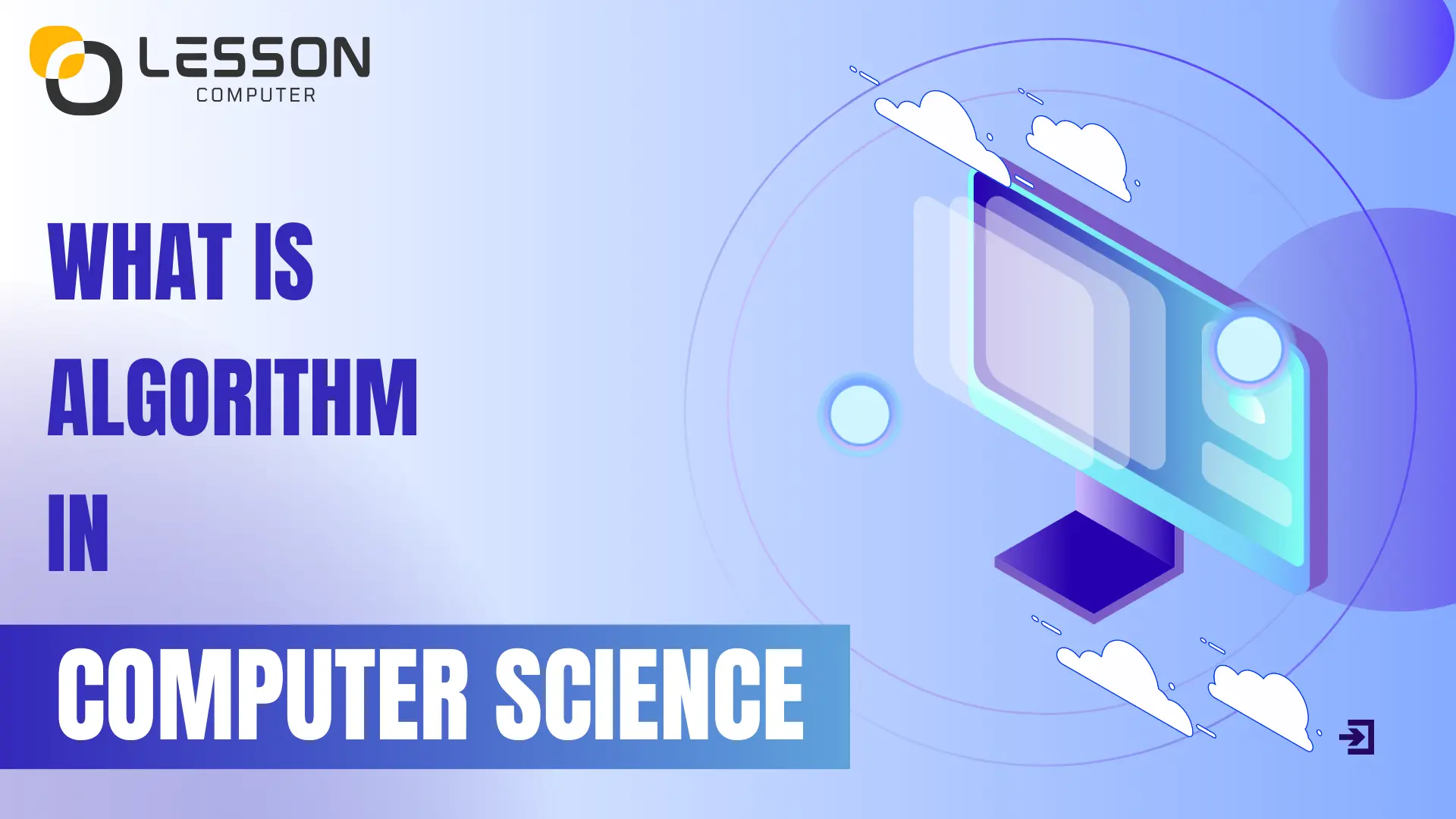
What is an Algorithm?– For your basic knowledge!
An algorithm is a stand of step-by-step instructions used to solve a problem or finish a task. According to its proper definition, an algorithm is a small set of instructions. They move in a specific order to carry out a particular task. It is not the entire program or code. It is simple logic to a problem represented as an informal description in the form of a flowchart or pseudocode. It guides how to execute operations logically to finish a specific outcome.
This article will explore algorithms and their types. It will discuss their meaning and why they are important in computer science. It will also cover how they can solve problems efficiently.
What is the most important type of Algorithm?
There are several types of Algorithms but some important ones are there:
- Brute Force Algorithm
- Randomized Algorithm
- Recursive Algorithm
- Sorting Algorithm
- Searching Algorithm
- Hashing Algorithm
- Graph Algorithm
- Dynamic Programming Algorithms
1. Brute Force Algorithm:
Brute Force Algorithm is the simplest approach that fully tries all possible solutions. It is suitable for small problem cases. But, it becomes unsuitable for larger ones due to its high-time problem. A beast force algorithm is the first to come when we see a problem.
2. Randomized Algorithm:

In the randomized algorithm, we use any number. It helps to decide the expected outcome. The decision to choose the random number gives a quick advantage. One common problem that can be solved through the Randomized Algorithm is Quicksort.
QuickSort is an example where randomization can be used to improve performance on the mean.
3. Recursive Algorithm:

This type of algorithm is based on recursion. In recursion, a problem is solved by breaking it into sub-issues of the same type. It calls itself again and again until the problem is solved with the help of a base position.
A) Divide and conquer Algorithm:
When together with the Divide and Conquer algorithms, the aim is solving the challenge in two parts. The first part is solving the challenge. This part breaks the problem into little problems that are of the same type.
The second is to tackle the smaller issue one by one. Then combine the results to create the last solution to the problem. Some one-by-one problems resolved with Divide and Conquer Algorithms include binary search. Also included are Merge Sort, Quick Sort, Strassen’s Matrix Multiplication, and many more.
B) Dynamic Programming Algorithms:
- This kind of method is called memorization. The concept is to save the earlier calculated result. This prevents it from being calculated many times.
- When using Dynamic Programming, break the complicated problems into smaller sub-issues that overlap and save the result for later use.
- The next issues are solvable with one of the Dynamic programming algorithms. These include Knapsack Problem, Weighted Job Scheduling, Floyd Wars hall Algorithm, etc.
C) Greedy Algorithm:
In the Greedy Algorithm, the solution is created in parts. The decision on which part to select for the next step is made based on the belief. It is thought that it will give an immediate advantage. The decision is never based on the decisions that were made before.
Common issues that can be solved using the Greedy Algorithm include Dijkstra’s Shortest Path Algorithm. There are also Prim’s Algorithm and Kruskal’s Algorithm. Another example is Huffman Coding, etc.
5. Searching Algorithm:
The searching algorithm is used to find a specific solution in particular sorted or unsorted data. Some common problems that can be solved by the Searching Algorithm are Binary search. Linear search is one example of a Searching algorithm.
6. Hashing Algorithm:

A hashing technique is a method to transform data like passwords (or files) into a fixed-length code. This is also known as a ‘hash.’ The hash functions as a unique digital fingerprint that identifies the data. This makes it simpler to keep it safe or verify whether the data changes. Hashing is commonly used to secure passwords. It verifies the authenticity of files. It also ensures data remains protected and in its original form.
7. Graph Algorithm:
Graph algorithms resolve problems involving graph structures composed of nodes (points) and edges (connections between points). They gain from determining the most efficient route between nodes, identifying loops, or selecting the connected nodes in the graph.
Examples: Dijkstra’s Algorithm, Bellman-Ford Algorithm, Floyd-Warshall Algorithm, A* Search Algorithms.
8. Dynamic Programming Algorithms:

The dynamic programming algorithm solves difficult problems by breaking the problem into smaller, simpler pieces overlapping. They can save the solution to smaller pieces. This way, the same calculations do not have to be repeated. This makes the process more efficient.
Examples: Fibonacci Sequence, Longest Common Subsequence, Shortest Path Algorithms, etc
Use of the Algorithms?
Algorithms are a solution element in many fields and are used for many applications. Some of the most significant areas where algorithms are employed are:
1. Computer Science:
Algorithms are the base of computer programs. They can be used to solve problems that range from basic sorting and search. They are also applicable to more complex tasks like artificial intelligence and machine learning. Learning algorithms is particularly beneficial for students at the O Level and A Level stages. At these levels, students have developed the foundational knowledge needed to understand logical problem-solving. They can start applying algorithms to real-world problems. For younger students, like those in Grade 9, a basic introduction to algorithms helps. It builds a strong foundation for more advanced learning in later years.
2. Mathematics:
Algorithms are used to solve mathematical issues. For example, they find the best solution to a set of linear equations. They also decide the shortest path on graphs.
3. Operations Research:
Algorithms can be used to make better decisions and improve the process like logistics, transportation, and resource allocation.
4. Artificial Intelligence:
Algorithms are the basis of artificial intelligence and machine learning. They are used to build intelligent systems. These systems can finish tasks like image recognition, natural language processing, and even decision-making.
5. Data Science:
Algorithms can be used to process data. They can analyze and gain insights from many quantities of data. This applies to fields like finance, marketing, and healthcare.
These are just a few examples of the many applications of algorithms. The application of algorithms is always expanding in emerging technologies and fields. This makes it a crucial element of modern society.
FAQ,s:
Algorithms help us to solve problems efficiently and speedily to find the most efficient route on the map to sort out our inbox.
Algorithms are continuing to improve their skill to deal with complex tasks, for instance, quantum computing AI as well as big data analysis.
Many problems cannot be solved by algorithms. Some problems are too difficult or do not give a clear solution.
No, some algorithms are straightforward, like getting the largest number In a list, whereas others, such as machine learning algorithms, are more complicated.
An algorithm is a concept or strategy for solving a problem. Computers are programs that implement algorithms on computers.
Conclusion:
Algorithms are essential tools in computers, solving problems across science and technology. They come in various forms like brute force, dynamic programming, recursive, and greedy algorithms, each serving a unique purpose. Understanding them helps you choose the best approach and speeds up computations. If you’re an O Level or A Level student, platforms like LessonComputer and IGCSE Tuitions offer personalized guidance. They help you master these concepts. With expert support, you’ll confidently apply algorithms in your studies and beyond, ensuring success in exams and real-world applications.
Discover more from Lesson Computer
Subscribe to get the latest posts sent to your email.



